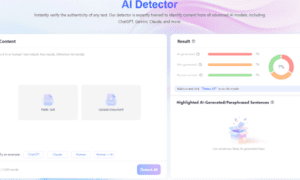As Australia’s population continues to age, many retirees are facing a critical question: how can they maintain their standard of living during retirement without selling their beloved homes? One increasingly popular solution is the reverse mortgage—a financial product designed specifically for older homeowners looking to tap into the equity built up in their properties. With the cost of living rising and pensions often falling short, reverse mortgages are offering Australian seniors a flexible and reliable source of income.
This article explores the ins and outs of reverse mortgages in Australia, how they work, who they benefit, and how to make informed decisions using tools like a reverse mortgage calculator. Whether you’re a retiree seeking financial peace of mind or a family member helping a loved one plan for retirement, understanding this financial option could be the key to unlocking a more comfortable future.
What Is a Reverse Mortgage?
A reverse mortgage is a type of home loan that allows homeowners—typically aged 60 or older—to borrow money using the equity in their home as security. Unlike traditional mortgages, borrowers do not have to make regular repayments. Instead, the loan is repaid in full (plus interest and fees) when the borrower sells the home, moves into aged care, or passes away.
For those wondering about the specific mechanics and requirements, this comprehensive guide on reverse mortgage Australia provides an excellent overview of the product, including eligibility criteria, loan structures, and repayment options.
Why Are Reverse Mortgages Gaining Popularity in Australia?
Several key factors are contributing to the rise in reverse mortgage adoption across the country:
1. Rising Cost of Living
Australian seniors are grappling with inflation, increased healthcare expenses, and higher utility bills. Pensions and superannuation often fall short of covering these rising costs, making home equity an attractive financial cushion.
2. A Desire to Age in Place
According to a study by the Australian Housing and Urban Research Institute (AHURI), more than 80% of seniors prefer to remain in their own homes as they age. A reverse mortgage allows them to access much-needed funds without selling their property.
3. Low Interest Rates and Property Growth
With historically low interest rates and rising property values, reverse mortgages offer a relatively low-risk borrowing option for retirees who have built substantial home equity over the years.
Who Is Eligible for a Reverse Mortgage?
To qualify for a reverse mortgage in Australia, borrowers typically need to meet the following criteria:
- Be 60 years of age or older (some lenders may require 65+)
- Own a home in Australia with significant equity
- Use the home as a primary residence
- Undergo a financial assessment and provide independent legal advice
Importantly, the older the borrower, the more they can typically borrow as a percentage of the home’s value.
How Much Can You Borrow?
The amount you can borrow with a reverse mortgage is influenced by several factors, including:
- Your age (or the age of the youngest borrower)
- The value of your home
- The location and condition of your home
- Current interest rates
For example, a 70-year-old retiree may be eligible to borrow up to 25–30% of their home’s value, while someone aged 80 might access 40% or more. To estimate borrowing potential and repayments, tools like a reverse mortgage calculator are essential.
Common Uses of Reverse Mortgage Funds
One of the key benefits of a reverse mortgage is the flexibility in how funds can be used. Common applications include:
- Supplementing retirement income
- Paying off existing debts
- Funding home renovations or aged care modifications
- Covering medical or aged care expenses
- Assisting children or grandchildren with home deposits or education
There are no restrictions on how the funds are used, giving seniors complete control over their financial choices.
The Importance of Informed Decision-Making
While reverse mortgages offer significant benefits, they are not suitable for everyone. Before proceeding, it’s crucial to understand the potential risks and long-term impact:
Pros:
- Stay in your home while accessing its equity
- No regular loan repayments required
- Flexibility in receiving funds (lump sum, line of credit, or regular payments)
- Improved lifestyle and financial freedom
Cons:
- Interest compounds over time, increasing the final repayment
- Reduces the value of the estate left to heirs
- May affect pension eligibility or aged care entitlements
- Exit fees and early repayment charges may apply
For this reason, it is essential that borrowers receive legal and financial advice before entering a reverse mortgage agreement.
Reverse Mortgage for Seniors: Is It the Right Choice?
The product has been specifically designed to serve the needs of older Australians. A reverse mortgage for seniors provides a unique opportunity to improve cash flow during retirement without selling off valuable assets or downsizing.
If you’re nearing retirement and looking for ways to enhance your quality of life while remaining financially independent, a reverse mortgage could be a practical solution. However, it should be seen as part of a broader financial strategy, not a standalone fix.
Real-Life Example: Margaret’s Story
Margaret, a 74-year-old widow living in Sydney, found herself struggling to cover everyday expenses despite owning her home outright. Her pension barely covered utilities, food, and medical bills. After consulting her financial advisor, she opted for a reverse mortgage.
Margaret was able to borrow $150,000—enough to renovate her kitchen, install a stair lift, and even take a long-overdue holiday. Importantly, she remained in her home and enjoyed greater financial peace of mind.
Future Outlook: What’s Next for Reverse Mortgages?
The reverse mortgage sector in Australia is expected to grow steadily over the next decade. Government initiatives and increasing public awareness are making these products more accessible. Additionally, technology-driven financial tools will help retirees make better-informed decisions and manage their wealth more effectively.
However, regulatory oversight will continue to play a key role in ensuring that products remain transparent and consumer-friendly.
Conclusion
As the financial landscape for retirees evolves, reverse mortgages are becoming a viable option for many Australians seeking to boost their retirement income without giving up their homes. With proper planning, sound financial advice, and tools like a reverse mortgage calculator, seniors can confidently explore this financial pathway.
If you or a loved one is considering a reverse mortgage, start by understanding the fundamentals and assessing your personal needs. The right strategy can provide not just financial relief, but also the freedom to enjoy your golden years with comfort and dignity.



































